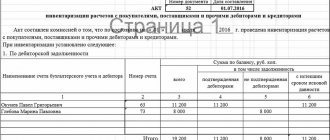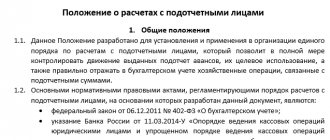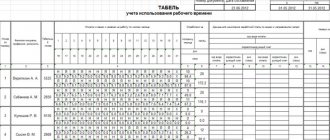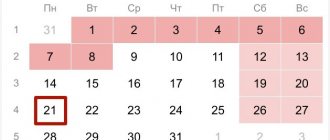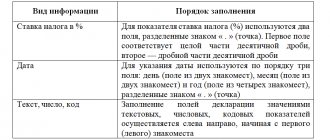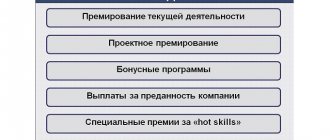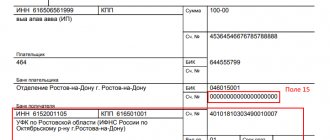Regulations on wages are an internal regulatory act of an organization, which provides complete information on wages. We'll tell you how to compose it.
The regulations on wages and material incentives set out the main characteristics of employee remuneration:
- payroll system;
- methods of material incentives;
- types of awards;
- due deductions;
- justification for accounting for salary costs in tax expenses;
- special conditions.
In other words, this document regulates how workers in a particular organization are paid.
Is it possible not to draw up a wage regulation and can they be punished for this?
The wage regulations are one of the employer’s internal documents.
It is necessary not only to describe the applied system of calculation and remuneration for labor, but also to consolidate the system of material incentives and rewards for employees in the organization. This provision justifies the legality of including salary costs in tax expenses. Its absence sharply reduces the chances of proving to tax authorities the legality of reducing the tax base for income tax or the simplified tax system for bonuses, additional payments, compensation and other similar payments.
Find out whether the employer is obliged to pay a bonus by following the link.
Given these advantages of the provision, taxpayers in most cases spare no time and effort in developing it.
You can do without such a document only in one case - if all the terms of remuneration are described in employment contracts with employees or in a collective agreement, or all employees of the company work under conditions that exclude any deviations from the usual (do not work overtime, at night and on holidays ). In this case, there is no need to draw up a separate provision.
The legislation of our country does not contain an unconditional requirement to develop and apply wage regulations for each employer. There are no requirements for the form, type and content of this document. Therefore, there will be no punishment for the arbitrary form of the provision or its absence as a separate document.
And if changes are made to working conditions, disputes may arise with both employees and workers. Find out how to correctly approve the wage regulations and avoid claims from a consultation with an expert from the Ministry of Labor. To do this, go through a quick registration in the ConsultantPlus system and get trial access for free.
Regulations on remuneration and bonuses for employees: is it necessary to combine
Since there are no legal requirements on this issue, in different companies you can find a variety of options for drawing up internal documents related to the calculation and payment of wages to employees.
For example, the regulations on wages are drawn up as a separate document, and the conditions for bonuses are prescribed in another local act - the regulations on bonuses and material incentives for employees. It is possible to provide for other salary provisions: on wage indexing, summarized recording of working hours, etc.
Some employers are limited to approving only one document - a collective agreement, which stipulates all the necessary aspects of the salary policy.
Read about the purpose and features of a collective agreement in the material “Collective agreement as a form of social partnership.”
The decision on whether to prescribe all the necessary salary nuances in one document or formalize each significant issue in separate provisions remains with the management of the company or the employer-individual entrepreneur. If a decision is made to combine the issues of the payment system and the features of bonuses in a single provision, it is necessary to spell out all the nuances in this document as scrupulously as possible.
To learn about what bonuses and rewards can be for employees, read the article “What are the types of bonuses and rewards for employees?” .
Types of cash incentives
The regulation includes an important section on monetary incentives for employees. It must indicate all current types of compensation and allowances with a specific indication of their amounts and payment procedure (in which cases they are applied and in what amount). The reward system may include the provision of free trips, tickets, etc. - then information about this is included in the document. In the “Financial assistance” section you need to indicate a complete list of cases when the administration provides financial support to its employees. This list usually includes: the birth of a child, the loss of a close relative, marriage. We can also talk about the case of individual assistance based on specific circumstances.
Additional items can be added if desired. If you decide to use a sample employee remuneration regulation 2021 prepared by experts, you should carefully double-check it for compliance with the procedures of your organization and rework it: for example, in some places there are allowances, and in others there are not. Some set a limit on the total amount of additional payments, others do not limit them.
It is necessary to indicate the specific amount of financial assistance or the method for determining it. For example, the director establishes it by his own decision in a separate order based on the submission of the employee’s immediate supervisor. This paragraph also separately indicates whether amounts of financial assistance will be taken into account when calculating average earnings.
Main sections of the regulations on remuneration and bonuses for employees
The regulations on wages and bonuses for employees may include, for example, the following sections:
- general terms and definitions;
- description of the current form and wage system in the company;
- terms and forms of salary payment;
- employer's liability for delayed wages;
- duration of the provision;
- “Additional payments” table;
- “Compensation” table;
- table "Allowances";
- “Premiums” table;
- table “Other employee benefits”.
The general section provides a link to the regulatory documents in accordance with which this provision was developed. Then a decoding of the basic concepts and terms used in the provision is given, so that any employee, when reading it, would not have difficulty understanding the contents of the document. The same section indicates who this provision applies to (employees under an employment contract, part-time workers, etc.).
The second section is devoted to a description of the wage system (WRS) adopted by the employer (time-based, piece-rate, etc.). If different SOTs are provided for different categories of workers and employees, a description of all applicable systems is given.
The section intended to describe the terms and forms of salary payment indicates the dates for the payment to employees of their earned remuneration (advance payment and final payment). You cannot limit yourself to a one-time payment of salary income.
See also “Advance payment – what percentage of salary?” .
IMPORTANT! Remuneration for labor must be paid at least 2 times a month (Part 6 of Article 136 of the Labor Code of the Russian Federation, letter of Rostrud dated May 30, 2012 No. PG/4067-6-1). Violators of this requirement may face administrative liability under clause 6 of Art. 5.27 of the Code of Administrative Offenses of the Russian Federation (fine from 30,000 to 50,000 rubles for a company, from 10,000 to 20,000 rubles for its officials and from 1,000 to 5,000 rubles for individual entrepreneurs). Also keep in mind that the payment period must be determined by a specific date; you cannot create a “fork” of dates.
However, paying wages more than 2 times a month will not violate any norms. Read more about this in the material “Salaries can be paid more than twice a month .
The same section reveals the form of remuneration: in cash through a cash register or by transfer to employees’ bank cards, as well as the percentage of possible payment of part of salary income in kind.
A separate paragraph reflects information related to the employer’s responsibility for delayed wages.
IMPORTANT! The employer's financial liability for delayed wages is provided for in Art. 236 of the Labor Code of the Russian Federation, which sets the minimum interest rate (not lower than 1/150 of the refinancing rate of the Central Bank of the Russian Federation from amounts not paid on time for each day of delay).
The regulations may establish an increased amount of compensation.
The main text part of the provision ends with a final section, which indicates the period of its validity and other necessary conditions.
In the internal labor regulations
According to current practice, the internal labor regulations must necessarily reflect the timing of payment of wages (Article 136 of the Labor Code of the Russian Federation). In this case, specific dates should be specified.
To avoid errors in determining payment dates, keep in mind that wages must be paid at least every half month, and no later than 16 days after the end of the period for which they were accrued (ILO Recommendation No. 85):
“The official salary is paid to the Employee every half month for the time actually worked based on the time sheet: for the first half of the month - on the 16th day, for the second half - on the 1st day of the next month.”
As for the amount of wages for the first part of the month (the so-called advance), the rules need to stipulate that it is paid according to the time actually worked (Resolution of the Council of Ministers of the USSR dated May 23, 1957 No. 566; Letter of Rostrud dated 09/08/2006 No. 1557- 6) in accordance with the report card. Setting the first part of the salary at a specific amount, for example 40%, is illegal.
In the terms of remuneration, it will be illegal to establish that the employee is obliged to receive wages from a certain bank, for example, as part of a salary project (Article 136 of the Labor Code of the Russian Federation). Please note that to change the bank, the employee must inform in writing about the change in the details for the transfer of wages no later than five working days before the day of payment of wages. This condition can be fixed in a local act. The employer has the right to establish a special procedure for an employee to submit an application to change a credit institution.
According to Art. 134 of the Labor Code of the Russian Federation, the company must establish conditions for wage indexation (see also Determination of the Constitutional Court of the Russian Federation dated June 17, 2010 No. 913-О-О). The provisions of the current labor legislation do not directly indicate the frequency of wage indexation; it is determined by the employer. This is usually done once a year:
“The Employer indexes the wages of employees, as a rule, by 3% annually in the second quarter of the current year based on the financial capabilities of the Employer and the approved budget.”
Write down all the guarantees and compensations provided to employees by law (allowances, additional payments, compensation), and also secure other payments established by the employer (for example, the possibility of bonuses).
Tabular part of the position
In the structure of the position from the example considered, all additional payments, compensations and bonuses are placed in separate tabular sections. This is not necessary - the text form of presentation can also be used. In this case, this method of structuring information was used for the purpose of clarity and ease of perception.
For information about what payments form the remuneration system, read the article “Art. 135 of the Labor Code of the Russian Federation: questions and answers" .
The “Additional payments” table contains a list of those salary supplements that are applied by the employer. For example, these could be additional payments related to overtime work, for night work or the employee’s work on a holiday, and other additional payments.
For each type of additional payment, the corresponding interest rates are indicated in the table. For example, for night work the surcharge is 40% of the hourly rate (for hourly workers). The necessary explanatory data is indicated in a separate column of the table (it may be called “Note”). For example, for additional payment for night work, this column shows the period considered night: from 22:00 to 6:00.
The structure of the “Compensation” table is similar to that described above. The listed compensations (for example, for harmful and dangerous working conditions, upon dismissal, reduction, etc.) are supplemented with the corresponding amount or calculation algorithm.
The “Additions” table is present in the regulations only if this type of monetary supplement to the employer’s salary exists. An example is the bonus for length of service. In this case, it is necessary to explain in detail for what period what amount of the premium is due. For example, for work experience from 4 to 7 years, the salary increase will be 12%, from 7 to 10 - 15%, and over 10 years - 18% of the accrued salary.
The remaining tables are filled in the same way.
You can see and download a sample regulation on remuneration and bonuses for employees - 2020 (current for 2021) on our website using the link below:
How to enter a position
The development of local regulations is carried out by management. But the executive body alone does not have the right to adopt the Regulations on remuneration and bonuses for employees. In accordance with Article 135 of the Labor Code of the Russian Federation, any internal regulatory documentation affecting wages must receive the approval of a trade union (of course, if there is one at the enterprise)
IMPORTANT!
If there is no such body in the company, then there is no need to approve the Regulations on Payment.
When a compromise is reached, the leader issues an order. In it he reflects:
- the fact of approval of the document, its name may vary (about payment, about bonuses, about the motivation system, about rewards for work);
- the need to familiarize all employees with it (in accordance with Article 22 of the Labor Code of the Russian Federation);
- the obligation to familiarize newly hired employees with it before signing the contract (in accordance with Article 68 of the Labor Code of the Russian Federation);
- responsible;
- control over execution.
From the date specified in the order, the Wage Regulations come into force. It is signed either by the manager (for example, the general director) or by a person with the appropriate authority - by proxy. This means you should make sure that the latter is valid at the time of signing.
It is mandatory for all employees to familiarize themselves, against signature, with the Regulations on Remuneration, whether newly introduced or already existing at the enterprise. There are several ways to do this correctly:
- draw up a special familiarization sheet, under which all employees will sign;
- create a special journal to record the fact of familiarization with internal regulations and make appropriate entries with the signatures of employees in it;
- For newly hired employees, the fact of familiarization may be indicated in the employment contract.
Is it necessary to review the wage regulations every year?
The wage regulations can be approved by the employer once and be valid without a time limit (indefinitely). The legislation does not establish any specifics for the validity period of such a document.
The need for an annual review of the regulations may arise in cases where the employer is developing new types of activities involving workers of various professions, for which a revision or addition of existing SOT and incentive payments is necessary, or working conditions are changing.
The employer and employees are interested in keeping their internal local acts up to date and must promptly initiate their revision, including the provisions under consideration.
We will tell you what to indicate in the order approving the wage regulations here.
What nuances are provided for in the provision for piecework wages?
Piece wages are one of the forms of remuneration in which the amount earned depends on the number of units of product produced by the employee or the amount of work performed. This takes into account the quality of the work performed, the complexity of execution and working conditions.
There are several types of piecework wages:
- simple;
- piecework-bonus;
- chord.
It is based on piece rates, and other salary supplements (for example, a bonus for absence of defects) are set as a fixed amount or as a percentage of the amount earned.
Depending on the types of piecework wages used, the regulations provide for the specifics of calculating and paying wages, taking into account all the nuances of a given SOT for a particular employer.
Read more about the piece-rate and bonus payment system in the material “The piece-rate and bonus payment system is...” .
Find out how an organization can switch to a new remuneration system in the ready-made solution ConsultantPlus.
Concept and scope
Piece wages are, along with time-based wages, the main system for calculating monetary remuneration to employees, which is used in modern conditions.
It is a payment method in which the total amount for the employee is calculated based on the work he has done. With this method, wages do not depend on the time actually worked by the subordinate, but on his specific performance results. An example would be quantity:
- manufactured products;
- services provided;
- attracted clients;
- repaired machines;
- manufactured parts, etc.
Most often, the use of the piecework system is used in the production sector and in relation to production workers.
Its use is most effective under the following conditions:
- the enterprise is characterized by narrow specialization and a small number of works performed (services provided);
- there is the possibility of not only clearly rationing labor and distributing responsibilities between employees based on their qualifications and abilities, but also recording quantitative indicators of their work;
- the work is predictable and performed using well-established technologies, which eliminates force majeure circumstances.
Depending on the specific conditions, different types of this system can be used, for example:
- indirect piecework;
- direct piecework;
- piecework-progressive;
- piecework-bonus.
The main advantage of using this system is the ability to establish a direct relationship between work results and remuneration. This makes it possible to increase the efficiency of subordinates and increase their motivation.
The disadvantage is the inability to take into account the impact of certain circumstances (downtime, breakdowns, accidents), as a result of which employees will lose part of their earnings.
However, it can be eliminated by establishing a mixed type of payment, with a certain amount of a fixed salary.
Time-based wages - what is it and when is it profitable to use it? Find out more about salary transactions in our material! You can find out how sick leave is paid if it falls on a weekend by following the link.
Results
Regulations on wages are necessary for both employees and the employer. With the help of this internal document, it is easier for the taxpayer to defend to the tax authorities the validity of reducing the tax base for income tax or the simplified tax system for various salary payments. And employees will be confident that they will not be deceived when calculating their salaries and they will be able to receive legal bonuses and compensation (including through legal proceedings).
This document does not have a legally established form; each employer has its own form.
Its validity period is set by the employer independently. The provision may be revised as necessary or remain in effect indefinitely. You can find more complete information on the topic in ConsultantPlus. Free trial access to the system for 2 days.
